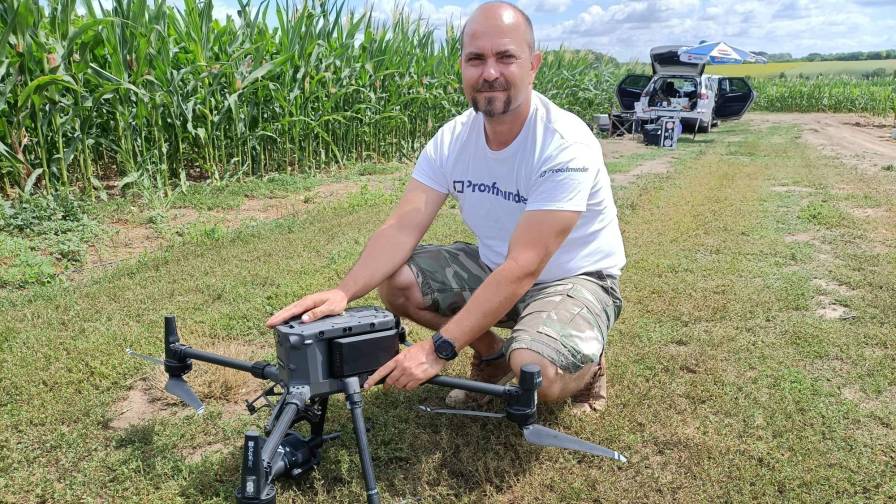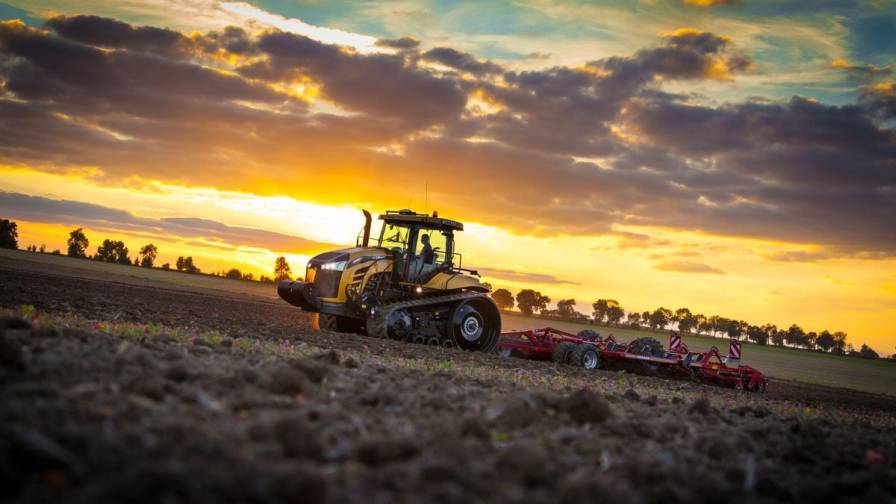South Dakota Poised to Benefit From Precision Agriculture
By the end of this year, $4 billion will be spent globally on precision agriculture with satellites, sensors, machines, data, and drones, according to an article on the South Dakota State University Extension website. It’s a collective industry opportunity and offers challenges which South Dakota is ready to embrace.
As Director of Operations for the Applied Technology Division of Raven Industries, Sarah Waltner was the keynote speaker at the recent South Dakota Corn Growers annual meeting in Sioux Falls. Waltner grew up on a family hog farm and says she spent a lot of time in the hog barns, in the family fields and neighbor’s fields. She graduated with an Electrical Engineering degree from South Dakota State University.

Sarah Waltner, Director of Operations for the Applied Technology Division of Raven Industries, told attendees at the recent South Dakota Corn Growers annual meeting that training those in the future workforce is vital to the success of precision agriculture in South Dakota. Photo courtesy of South Dakota Corn Growers.
“Precision ag is the basis for what we do,” Waltner said in her remarks. She explained, “Precision ag is based on observing, measuring and responding to inter- and intra- field variability. It combines agronomic practices with farm machinery technology and with actionable data.”
Farmers have to be profitable, Waltner said. It used to be that nitrogen was applied at the same rate across the field. If one field or a corner of a field had highly productive soil, applying more pounds of nitrogen was worth the increased input expense. If the soil is rocky or sandy, there would be a lower yield because the base soil will not yield much, no matter how much nitrogen is applied. Precision ag gives farmers a way to analyze the needs and the variable rate equipment allows a prescribed application of applied nutrients where needed and at most beneficial rate for the crop.
MORE BY MATT HOPKINS
Rural Connectivity Gets a Major Boost: 5 Things to Know About the John Deere-SpaceX Deal
Robot Umpires to Robot Tractors: Similarities Run Deep Between Baseball and Agriculture
Waltner referred to a study done by the industry which shows there is a 10 to 15 percent saving in inputs for GPS- guided steering because there is less overlap or application in unnecessary areas. There is a 10 percent savings when using variable rate application. This is because nutrients are only applied where needed. In another study, 85 percent of corn growers polled believed they were more profitable after adopting more technology.
Farmers are bombarded with complicated questions, Waltner said. Do I spend money on GPS or not? What about section control? What do I do with the data? What kind of data do I use? Do I get my imagery from the sky or from in-field sensors? Really good things are happening in the industry, but it comes down to a question about how the technology can work together to help the farmer.
Specifically, no one person or company can solve the problem of data overload. Technology is very complicated.
“We have gone from no data, or not much data, to so much data that it freezes the farmers,” Waltner said. “Precision ag is different from when it started and where it will be in 5 to 10 years. The key thing is figuring out the intersection between what money farmers will pay for their technology, how much do they want to spend on data, and how much do they pay for agronomy services, and how certain they are of a return from that investment.”
Farmers have made investments, but 65 percent say they are not using the technology to its full potential. Dealing with this is a real opportunity and also a real challenge.
Ag is the largest sector of South Dakota’s economy. Raven sees training those in the future workforce as vital to the success of precision ag. The company recently donated $5 million to help pay for the construction of a Precision Agriculture Facility at SDSU’s main campus in Brookings.
Waltner says the development of the SDSU Precision Ag program will yield new research, new job opportunities and likely new companies. Graduates of the program will go back to their communities and become an important part of the state’s workforce.
“Training is huge, retention is huge,” Waltner said. “With more and more complicated technology, we need a more developed workforce who understand the challenges of precision ag. Workforce development is important to the progression of the state.”










